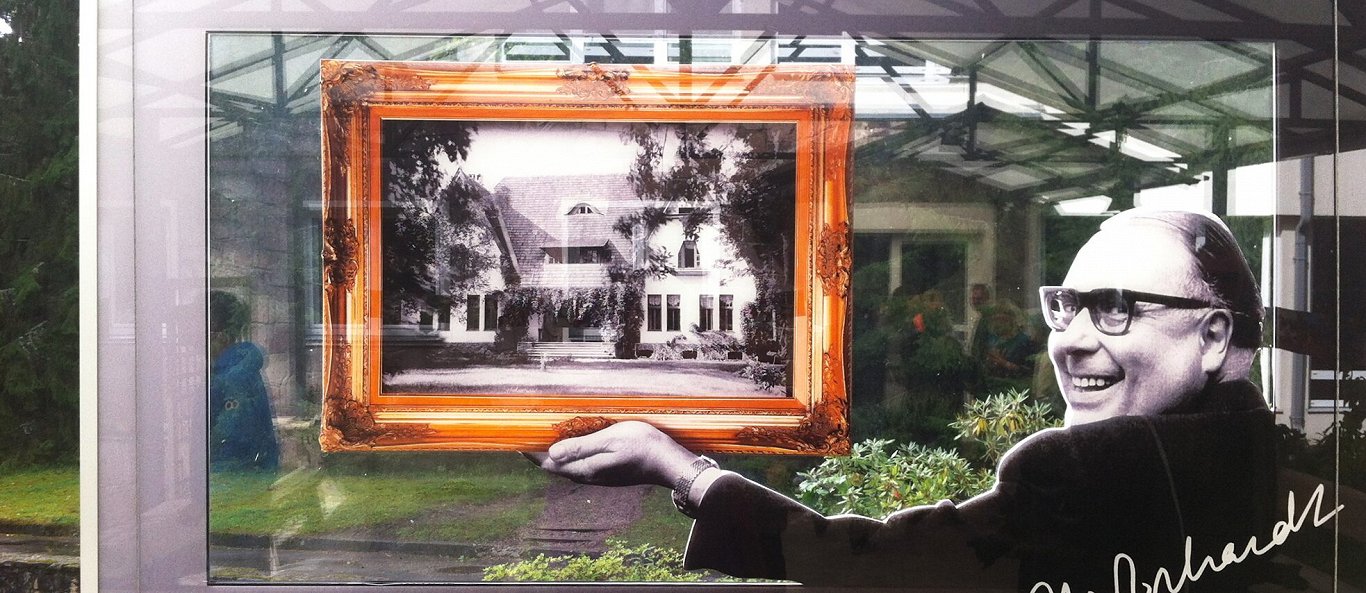Heinz Erhadrt (1909-1979) is one of the most beloved German comedians of all time. Following the Second World War, this humorist in horn-rimmed glasses would comment on the post-war economic miracle of Germany with subtle jokes and irresistible rhyming verse. Decades after his death, many still laugh at his ever-relevant rhymes, parodies and skits. People of all ages still prize and enjoy his books, poetry collections and comic films.
Nevertheless, despite having acute stage fright Erhardt was happiest as a solo artist on the cabaret stage. This versatile entertainer first tested his musical and comical talents in his native Rīga. Back in the 1930s, the “always jolly Heinz Erhardt” (according to the Rigasche Rundschau newspaper) would first perform poems and his own songs at festive gatherings and city cafes. Later on he would entertain audiences from the German Theater (Deutsches Schauspiel) stage.
Ehardt comes from a Baltic German family that moved from Pfalz to what was then the Baltic province of the Russian Empire. The family was part of the upper classes, with Heinz’s grandfather Johann Jakob becoming the head of the Rīga administration from 1915 until the arrival of the Bolsheviks; whereas his uncle Robert had a short stint as the second finance minister in the fledgling Latvian Republic which was established in 1918. The Erhardt family burial plot in Rīga was recently restored by the municipality.
It is likely that Heinz Erhardt inherited his musical talent from his father Gustav, who earned a living as a Kapellmeister. As his parents’ marriage disintegrated shortly after he was born, little Heinz first lived together with his grandparents in Rīga. Later on his mother took him in at her place in St. Petersburg, and Heinz would also accompany his father on a concert tour across Germany.

At the age of fifteen, Heinz, who had often longed for his native city, was able to return to his grandparents in Rīga. However, as he had often changed schools, he was unable to pass the Abitur at the German Gymnasium. As per the will of his grandfather Paul Neldner, he was nevertheless to take over the family’s music supplies store and concert agency, situated close to where the Freedom Monument now stands.
To his grandfather’s displeasure, Heinz, who wanted to become a pianist, much rather preferred composing and tickling the ivories to actually selling the instrument. Later on the gifted artist devoted himself fully to an entertainer’s career and took his talents to different locations in Rīga. Even though local press and audiences praised him, he found it difficult to make money. Moving to Berlin in the late 1930s only brought limited initial success.
He only achieved professional success after the Second World War in Germany. But he met the love of his life in Rīga while in an elevator. “Thankfully, in those days elevators were quite slow in Rīga,” he said, relating his first encounter with Gilda Zanetti in spring 1934. The daughter of the Italian Consul, she would accompany him to the end of his life and they would have four children.
The curiously-inclined have the chance to follow the historian and guide Maik Habermann on the tracks of young Heinz and his family members in Rīga and elsewhere in Latvia. For example, the Āmarnieki Manor was situated near Tukums, western Latvia. While it has lost its former look, Heinz Erhardt always said it was the place were he had had his best holidays.
The German Traces series was first published as part of the Goethe Institut in Rīga project “German Footprints in Latvia” ("Vācu pēdas Latvijā" www.goethe.de/vacu-pedas). The linked mobile application "German Footprints in Latvia" can be downloaded at www.ej.uz/vp-iOS and www.ej.uz/vp-Android.



























